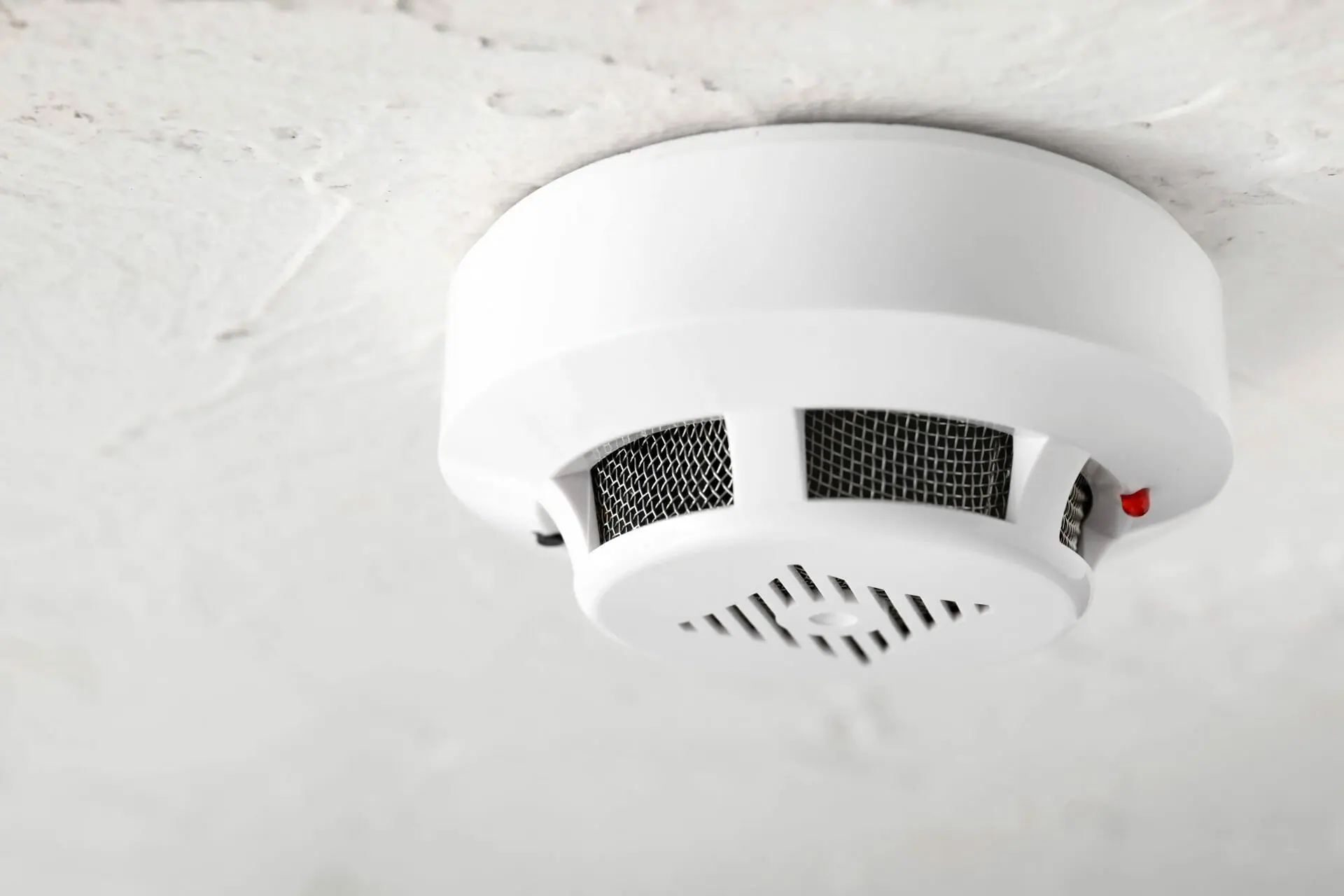- If your smoke detector/fire alarm is nuisance beeping, first make sure it’s not the carbon monoxide detector
- A CO alarm will usually beep continuously without stopping
- If it’s the smoke detector/fire alarm, try pressing the reset button, replacing the batteries, or give it a cleaning to make sure debris isn’t causing it to malfunction
- Watch this video for a step-by-step guide:
Do you have a smoke detector that’s been driving you crazy with its incessant beeping? If so, don’t worry – we’re here to help! In this blog post, we will provide you with a comprehensive guide on how to stop a smoke detector from beeping.
We’ll go over everything from identifying the cause of the beeping to fixing the issue. So if your smoke detector is driving you crazy, keep reading for some helpful tips!
Contents
- So, why is my smoke detector or fire alarm beeping if there’s no fire?
- Is it a carbon monoxide alarm?
- What if it’s just a smoke detector?
- How do fire alarms work?
- How to Disable a Smoke Alarm
- Common Steps
- If It’s A Hardwired (AC) Model
- If It’s A Standalone (DC) Model
- How to clean and reset your alarms
- How to Turn Your Smoke Alarm Back On
- What to Do About a Smoke Alarm When You’re Renting?
- What causes false alarm chirping?
So, why is my smoke detector or fire alarm beeping if there’s no fire?
The smoke alarm could be malfunctioning, or there could be something blocking the sensor. If you have a battery-operated smoke detector, it’s also possible that the batteries are low. In any case, it’s important to identify the cause of the beeping before taking action to stop it.
Is it a carbon monoxide alarm?
If you have a carbon monoxide alarm, it could be beeping because there’s high levels of carbon monoxide in the air. In this case, you should evacuate the premises immediately and call for help.
What if it’s just a smoke detector?
If your smoke detector is beeping and there’s no fire or carbon monoxide present, there are a few things you can do to stop the beeping. First, try pressing the test button on the smoke detector. This will usually silence the alarm. If that doesn’t work, you may need to replace the batteries. And if your smoke detector is hardwired, you may need to reset it by flipping the
How do fire alarms work?

Most smoke detectors work by using a radioactive isotope of americium to ionize the air and create an electrical current. When smoke particles enter the chamber, they disrupt the current and cause the alarm to sound.
How to Disable a Smoke Alarm
Common Steps
1. Press The Reset Button: The smoke alarm reset button is usually located on the smoke alarm itself. It may be labeled as the “hush” or “silence”.
2. Remove the Battery: This will stop the smoke alarm from beeping temporarily. It’s a good idea to replace the battery at the same time so you’re not caught with a non-functioning unit in the event of an emergency!
3. Check Your Circuit Breaker: If your smoke alarm is hardwired, it may be getting power from a faulty circuit. resetting the breaker should fix the problem.
4. Go to Your Fire Control Panel: If you have a commercial smoke alarm system, the control panel may need to be reset.
5. Replace the Smoke Detector: If none of the above steps work, it’s likely that your smoke detector is damaged and will need to be replaced.
If It’s A Hardwired (AC) Model
If your smoke alarm is hardwired, it’s getting power from your home’s electrical system. This means that the beeping could be caused by a problem with the smoke alarm itself, or with the wiring.
If It’s A Standalone (DC) Model
If your smoke alarm is battery-operated, the beeping is probably caused by low batteries. You can try replacing the batteries to see if that helps.
How to clean and reset your alarms
Smoke alarms should be cleaned at least once a year to prevent them from becoming clogged with dust and debris. You can clean your smoke detector by vacuuming the outside of the unit with the brush attachment. If your smoke alarm is hardwired, you’ll also need to remove the cover and vacuum the interior of the unit.
Resetting a hardwired unit with a removable battery backup is easy – just press the test button to reset the alarm. For standalone units, you’ll need to remove the batteries and then reinstall them.
How to Turn Your Smoke Alarm Back On
Once you’ve fixed the problem that was causing the smoke alarm to beep, you’ll need to turn it back on. For hardwired units, this is as easy as flipping the switch on the circuit breaker. For standalone units, you’ll need to reinstall the batteries and then press the test button.
And that’s it!
What to Do About a Smoke Alarm When You’re Renting?
If you’re renting, you should contact your landlord or property manager about any problems with the smoke alarm. They are responsible for maintaining the smoke alarm and will be able to help you troubleshoot the problem.
What causes false alarm chirping?
There are several things that can cause a smoke alarm to false alarm, including:
- Dust and dirt build-up on the smoke sensor
- A loose or damaged smoke detector
- Low batteries
- Malfunctioning electrical wiring
Most of these problems can be fixed by following the steps in this article.
What does it mean when the fire alarm is blinking red?
If your smoke alarm is blinking red, it means that the battery is low and needs to be replaced. You should replace the battery as soon as possible to avoid a false alarm.
I hope this article was helpful! If you have any other questions about smoke detectors, feel free to leave a comment below. Thanks for reading!
